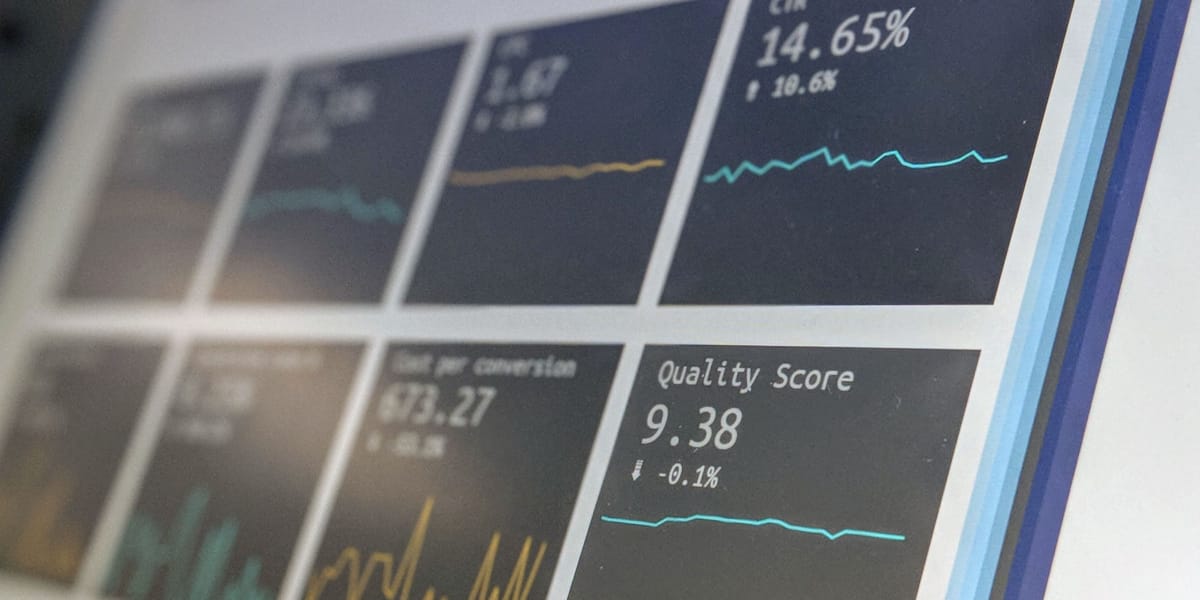Is It Better to Build or Buy a Data Analytics Platform?
Only 46% of retailers are actively investing in data analytics technology; and a paltry 11% have some cloud-based analytics capability at all.

If there is one commonality of retail brands, it’s making the most out of every dollar. When industries like apparel have such slim margins, eeking profit out of every cent spent is key to maintaining a healthy business. And to get the most bang for your buck, top retailers always turn to robust analytics software.
The ROI of a data analytics tool for retail businesses is impressive. As we mentioned in a previous post, the digital leaders saw 83% more profit than their non-analytical counterparts. Want another datapoint? (Of course you do. We’re talking analytics after all!) According to Nucleus Research, analytics sees an ROI of $13.01 for every dollar spent.
This sort of ROI is not that surprising. Keep in mind that retail analytics seeks to optimize many different sectors of the entire retail business in order to maximize efficiency. From improving the supply chain, to reducing stockouts, to optimizing pricing, to personalizing marketing for higher efficacy; retail data analytics is meant to seek out inefficiencies across the board in order to make more happen with less.
Yet even in today’s data-driven world, only 46% of retailers are actively investing in data analytics technology; and a paltry 11% have some cloud-based analytics capability at all. We mentioned previously that it takes a culture-shift to get retail analytics in use for businesses, but there is another hurdle we hear all the time.
The Perceived Cost of Retail Analytics
Like all software, analytics tools are a legitimate cost that retailers have to consider, and in doing so, many simply choose to eschew these tools in favor of doing it by hand – which generally means hours spent wrangling Excel or Google Sheets.
And it makes sense that they might be squeamish about yet another monthly subscription. Retailers already pay for their ecommerce platform, their CRM, their email marketing client, their POS, and on and on. Not to mention, data analytics tools aren’t as necessary in the minds of retail managers. As in, your store simply cannot function without a Shopify subscription… but you can “get by” with Excel for your analytics.
Then there’s the human time commitment to an analytics tool. Managers often think they would need to dedicate hours of their team to manage and extract data, or even hire a data analyst to manage it all for them. Considering the average salary of a data analyst hovers around six figures (depending on your metro), that’s a hefty perceived cost in addition to the data platform itself.
These reasons are why some retailers end up exploring the option of building their own in-house analytics platform. After all, it might be a hefty upfront cost, but you no longer have to be locked into a monthly subscription model, right?
Well…
The Cost of Building a Retail Analytics Tool
According to Gartner, businesses may spend a decent amount to buy an analytics tool, but it costs significantly more to build one. Even when built in-house, it’s not a one-time cost either. Software has to be maintained, updated/upgraded, and patched constantly. This can already cost between $5000 and $50,000 a month! This is on top of the initial cost of software development, which can run between $50,000 to $200,000 for the app itself.
And if a retailer decided to build their own analytics platform, that’s really when they would need not just a full-time data analyst, but a data scientist who commands an average salary much higher than an analyst – to the tune of around $250,000 each year.
The data investment isn’t guaranteed to bear fruit either. Sears has long been a poster child of heavily investing in data to no success. By some estimates, Sears put $2 billion into their data analytics platform, but they failed to save their own brand, let alone reap the ROI that retailers typically see from good data analytics implementation.
All this isn’t to say that it’s impossible to build a robust, effective data product in-house. For example, insurance provider Allstate did it and seems to be thriving. But it is incredibly expensive to build an analytics tool for your business, and often the true cost is beyond the reach of even some enterprise-level retailers.
Why Buying Your Retail Analytics Tool Makes Sense
Buying a subscription to a plug-in analytics tool often makes the most sense to budget-conscious retail brands. Not only can they stop at any time if they don’t find ROI from the tool, but the average monthly cost is typically much lower than the investment of building and maintaining an in-house solution.
Here at 42, we keep this in mind when working with retail teams. In fact, while pricing varies by size and scale of each business, the overall average monthly cost of a 42 subscription is between $2500 to $3500. Not only is this much more affordable than the upfront investment of building an in-house app, the subscription also covers constant updates to the analytics platform, 2-3 hours each week of technical & analytical support, and the cost savings of not having to hire a data analyst.
For a fraction of the cost of building your own analytics platform, your team can gain access to 42’s industry-leading analytics suite. Again, with good data analytics returning $13 to every dollar spent, it’s not unusual for the cost of a 42 subscription to pay for itself many times over.
Interested in seeing how 42 can show you massive ROI with better data analytics? Click here for a free demo of our product today.
